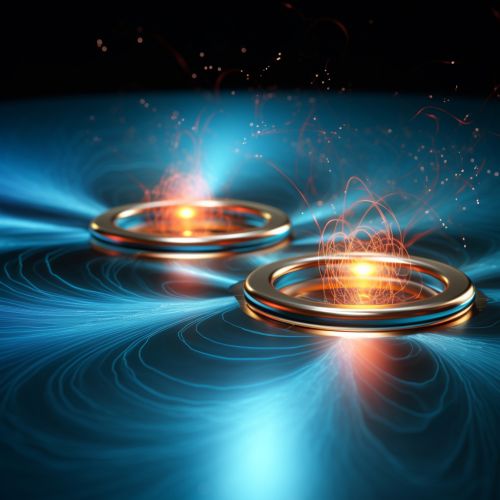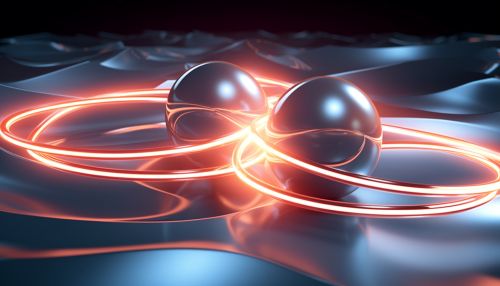Cooper Pairs
Introduction
Cooper pairs are a fundamental concept in the field of superconductivity. Named after physicist Leon Cooper, who first proposed their existence, these pairs consist of two electrons with opposite momentum and spin. This pairing mechanism leads to the phenomenon of superconductivity, where a material can conduct electricity with zero resistance.


Discovery and Theoretical Background
The concept of Cooper pairs was first introduced in 1956 by Leon Cooper as part of his research on superconductivity. Cooper was studying the behavior of electrons in a superconductor, a type of material that can conduct electricity without resistance at very low temperatures. He found that under certain conditions, two electrons in a superconductor could form a bound state, which he termed a "Cooper pair".
The formation of Cooper pairs is a quantum mechanical effect and is a result of the attractive interaction between electrons mediated by phonons, the quantum of vibrational energy in a crystal lattice. This interaction leads to an effective attraction between electrons, which can overcome the natural repulsion between them due to their like charges.
Formation of Cooper Pairs
The formation of Cooper pairs is a complex process that involves several steps. First, an electron moving through a superconductor causes a distortion in the crystal lattice of the material. This distortion propagates through the lattice as a phonon. When another electron encounters this phonon, it can absorb it, leading to an attractive interaction between the two electrons.
This interaction is strong enough to overcome the natural repulsion between the two electrons due to their like charges, allowing them to form a Cooper pair. The two electrons in a Cooper pair have opposite momentum and spin, which means that they form a singlet state. This state is a lower energy state than the individual electrons, which is why the Cooper pair formation is energetically favorable.
Role in Superconductivity
Cooper pairs play a crucial role in the phenomenon of superconductivity. In a superconductor, the Cooper pairs move through the material without scattering off impurities or lattice vibrations, which is why they can conduct electricity without resistance. This is in contrast to normal conductors, where the movement of electrons is constantly impeded by these factors, leading to electrical resistance.
The movement of Cooper pairs through a superconductor is described by the BCS theory, named after John Bardeen, Leon Cooper, and John Robert Schrieffer, who developed it. According to this theory, all the Cooper pairs in a superconductor form a macroscopic quantum state, known as a Bose-Einstein condensate. This state is characterized by a long-range quantum mechanical phase coherence, which is responsible for the zero resistance of superconductors.
Experimental Evidence
The existence of Cooper pairs has been confirmed by several experiments. One of the most direct pieces of evidence comes from tunneling experiments, where a superconducting material is brought into contact with a normal conductor. These experiments have shown that the charge transport in superconductors is carried out by entities with twice the charge of an electron, which is consistent with the idea of Cooper pairs.
Another piece of evidence comes from the observation of the Josephson effect, a quantum mechanical phenomenon that occurs in superconducting circuits. This effect, which involves the tunneling of Cooper pairs between two superconductors separated by a thin insulating barrier, provides further confirmation of the existence of Cooper pairs.
Applications
Cooper pairs and the superconductivity they enable have numerous applications in various fields. In electronics, superconductors are used to make SQUIDs (Superconducting Quantum Interference Devices), which are extremely sensitive magnetometers. In addition, superconductors are used in the construction of MRI machines, which are widely used in medical imaging.
In the field of quantum computing, Cooper pairs are used to create qubits, the basic units of information in a quantum computer. The ability to manipulate Cooper pairs is crucial for the operation of these devices.
